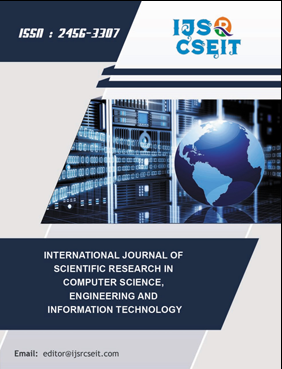Using Support Vector Machines to Classify Student Attentiveness for The Development of Personalized Learning Systems
Keywords:
There have been numerous examinations in which specialists have endeavored to group understudy mindfulness. A large number of these methodologies relied upon a subjective investigation and lacked any quantitative examination. Thusly, this work is centered around crossing over any barrier among subjective and quantitative ways to deal with arrange understudy mindfulness. Subsequently, this examination applies AI calculations (K-means and SVM) to consequently group understudies as mindful or absentminded utilizing information from a customer RGB-D sensor. Consequences of this exploration can be utilized to improve showing techniques for educators at all levels and can help teachers in actualizing personalized learning systems, which is a National Academy of Engineering Grand Challenge. This exploration applies AI calculations to an instructive setting. Information from these calculations can be utilized by teachers to give significant feedback on the adequacy of their instructional procedures and teaching methods. Teachers can utilize this feedback to improve their instructional methodologies; and understudies will profit by accomplishing improved learning and subject authority. At last, this will bring about the understudies' expanded capacity to accomplish work in their separate territories. Extensively, this work can help advance endeavors in numerous zones of training and guidance. It is normal that improving instructional systems and actualizing personalized learning will help make increasingly skilled, competent, and arranged people accessible for the future workforce.Abstract
There have been numerous examinations in which specialists have endeavored to group understudy mindfulness. A large number of these methodologies relied upon a subjective investigation and lacked any quantitative examination. Thusly, this work is centered around crossing over any barrier among subjective and quantitative ways to deal with arrange understudy mindfulness. Subsequently, this examination applies AI calculations (K-means and SVM) to consequently group understudies as mindful or absentminded utilizing information from a customer RGB-D sensor. Consequences of this exploration can be utilized to improve showing techniques for educators at all levels and can help teachers in actualizing personalized learning systems, which is a National Academy of Engineering Grand Challenge. This exploration applies AI calculations to an instructive setting. Information from these calculations can be utilized by teachers to give significant feedback on the adequacy of their instructional procedures and teaching methods. Teachers can utilize this feedback to improve their instructional methodologies; and understudies will profit by accomplishing improved learning and subject authority. At last, this will bring about the understudies' expanded capacity to accomplish work in their separate territories. Extensively, this work can help advance endeavors in numerous zones of training and guidance. It is normal that improving instructional systems and actualizing personalized learning will help make increasingly skilled, competent, and arranged people accessible for the future workforce.
References
- V. Snider, “Use of self-monitoring of attention with ld students: Research and application,” Learning Disability Quarterly, pp. 139–151, 1987.
- E. E. McDowell et al., “A multivariate study of teacher immediacy, teaching effectiveness, and student attentiveness at the junior high and senior high levels.,” 1980.
- R. P. Grobe and T. J. Pettibone, “Effect of instructional pace on student attentiveness,” The Journal of Educational Research, pp. 131–134, 1975.
- S. Simon, “Biosensors to monitor students’ attentiveness. .”Retrieved June 5, 2012, from http://www.reuters.com/article/2012/06/13/, June 2012.
- S. Asteriadis, P. Tzouveli, K. Karpouzis, and S. Kollias, “Estimation obehavioral user state based on eye gaze and head pose-application in an e-learning environment,” Multimedia Tools and Applications, vol. 41, no. 3, pp. 469–493, 2009.
- H.-R. Chen, “Assessment of learners’ attention to e-learning by monitoring facial expressions for computer network courses,” Journal of Educational Computing Research, vol. 47, no. 4, pp. 371–385, 2012.
- M. Martinez, “What is personalized learning? are we there yet,” E-Learning Developer’s Journal, 2002.
- M.-J. Huang, H.-S. Huang, and M.-Y. Chen, “Constructing a personalized e-learning system based on genetic algorithm and case-based reasoning approach,” Expert Systems with Applications, vol. 33, no. 3, pp. 551–564, 2007.
- J. Liu, C. K. Wong, and K. K. Hui, “An adaptive user interface based on personalized learning,” Intelligent Systems, IEEE, vol. 18, no. 2, pp. 52– 57, 2003.
- J. MacQueen, “Some methods for classification and analysis of multivariate observations,” in Proceedings of 5th Berkeley Symposium on Mathematical Statistics and Probability., pp. 281–297, University of California Press., 1967.
- C. Cortes and V. Vapnik, “Support-vector networks,” Machine Learning, vol. 20, no. 3, pp. 273–297, 1995.
- “Kinect for Windows.” http://www.microsoft.com/en-us/kinectforwindows/, 2013.
- A. Guye-Vuillème, T. Capin, S. Pandzic, N. Thalmann, and D. Thalmann, “Nonverbal communication interface for collaborative virtual environments,” Virtual Reality, vol. 4, no. 1, pp. 49–59, 1999.
- H. Wagner, C. MacDonald, and A. Manstead, “Communication of individual emotions by spontaneous facial expressions,” Journal of Personality and Social Psychology, vol. 50(4), pp. 737–743, 1986.
Downloads
Published
Issue
Section
License
Copyright (c) IJSRCSEIT

This work is licensed under a Creative Commons Attribution 4.0 International License.

